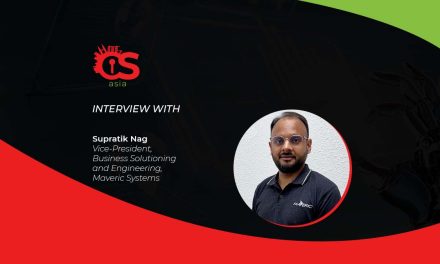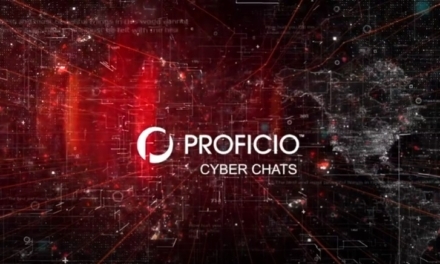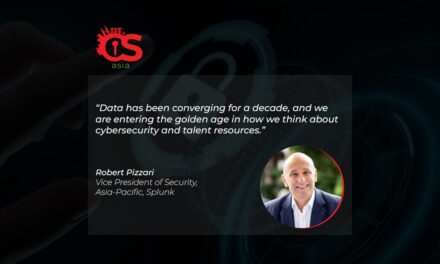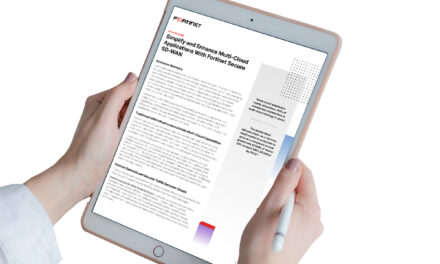Why security products need to be integrated and consolidated.
Complexity Is a Bottleneck for Digital Acceleration
As networks become more complex and distributed, detecting and responding to threats has become increasingly difficult, which has led to security sprawl. This issue complicates management, fragments visibility, and limits the ability of organizations to respond effectively to threats. That’s partially because enterprises today have deployed an average of 45 security solutions across their network, most of which operate in a silo, making centralized management nearly impossible.
To make matters worse, detecting and responding to a cyber incident needs the coordination of 19 security solutions. It leads to complex workarounds that need to be constantly managed and reconfigured whenever devices upgrade.
The above and similar challenges relate to complexity and integration have made a cybersecurity mesh architecture essential for today’s organizations.
Why Consolidation Matters
The situation for security today is that security leaders have too many tools. The large number of security products in organizations increases complexity, integration costs and staffing requirements.
Moreover, there are organizations use isolated lines of business as internal processes, which influences silos of what solutions are chosen and how they are implemented—leaving security teams to deal with the mash-ups and complexities of the resulting patchwork deployments. This also provides a perfect storm for attackers and threats to exploit the resulting silos, complexities, and visibility gaps. And all of this is even further exacerbated by the resource and cybersecurity skills gaps that continue to trouble many organizations.
The digital attack surface is expanding at a rapid rate, making it increasingly difficult to protect against advanced threats. According to a recent Ponemon study, nearly 80% of organizations are introducing digital innovation with high frequency, which cannot adapt to their ability to secure it against cyber-attacks. In addition, the challenges of complex and fragmented infrastructures continue to bring a rise in cyber events and data breaches. Assorted point security products in use at some enterprises typically operate in silos, preventing network and security operations teams from having clear and consistent insight into what is happening across the organization.
The key findings from the survey of IT and security professionals globally confirmed the following content:
- With more assets to secure, confidence in security goes down
- Multiple management consoles obscures visibility
- Working with multiple security vendors brings challenges for organizations
However, presenting such a cohesive and reliable solution with clear visibility and consistent control is nearly impossible. When tools aren’t designed to natively work together, IT teams are forced to bolt them together by using complex workarounds. But maintaining and troubleshooting such workarounds ends up consuming a significant amount of IT overhead. In such an environment, even trivial product updates can become a logistical nightmare.
It is Imperative to Carry Out Security Products Integration
Greater integration that accompanies consolidation can improve security, minimizing the functional gaps between the protection that each product delivers. The reduced time, cost, and resource saved with integrated management could be better utilized to improve cybersecurity performance.
Fortinet Helps Enterprise Security Products Realize Real Comprehensive Integration
The Fortinet Security Fabric is ideally suited to address these new complex challenges. Our portfolio includes more than 50 security and networking technologies—the largest in the industry. These technologies are based on the ground up to interoperate—sharing threat intelligence, correlating data, and automatically responding to threats as a single, coordinated system.
The Fortinet Security Fabric delivers the broad, integrated, and automated capabilities, which are needed to make a cyber security mesh architecture a reality. The industry’s best-performing cyber security mesh platform reduces complexity, streamlines operations, and increases threat detection and response capabilities to empower organizations, so as to accelerate secured digital acceleration outcomes. Since more than 450 third-party technology partners support it, the Fortinet Security Fabric gives organizations the flexibility they need to implement a wide range of solutions that fit their individual needs now as well as in the future.
Fortinet’s market-leading defense strategy starts with the Fortinet Security Fabric. It is designed to address the dynamic security challenges faced by those organizations who adopt digital innovation initiatives— including today’s expanded digital attack surface, advanced threats, and increased infrastructure complexity—combined with growing performance and scalability requirements.
In additional, FortiGuard Labs provides the threat intelligence foundation for all Fortinet Security Fabric components, keeping them up to date with the latest threat identification and protection information available.
Fortinet has been widely recognized by the customers, market, and third-party authorities (Gartner, Forrester, IDC, Frost and Sullivan, etc.), including as many as eighteen Gartner report nominations. This proves that Fortinet products are the best-of-breed in the different industries.
However, the problem is that how to make different types of best performed security products and different types of security modules compatible, coupling with each other through standardized interfaces and combining with unique framework design. This is one of Fortinet’s strengths.
A broad, integrated, and automated platform, such as the Fortinet Security Fabric, is vital to seamlessly and successfully implement. It not only provides centralized management and visibility, but also enables end-to-end automation. It adapts to the changing network environments and supports as well as interoperates with a vast ecosystem of network environments and third-party solutions.
Join Fortinet at the Secure Operational Technology Summit 2022 – APAC
On April 7th, hear from CISOs, Asset Owners, Industrial Control System (ICS) vendors, IDC and Fortinet experts online during a virtual conference where we will discuss how organizations deal with the uncertainties of the continuing pandemic and how you can build cyber resilience to protect your digitalization plan. This year’s Fortinet OT Summit has been tailored for Asia Pacific, with different start times to cater to attendees across different timezones in South East Asia and Hong Kong, India & SAARC and ANZ regions. With 6 keynotes, 2 panel discussions and 5 on-demand sessions in the Technology Track covering ransomware disruptions, supply chain breaches, securing remote access and strategic implementations for ICS (industrial control systems) security – the Fortinet OT Summit APAC provides a forum for knowledge-sharing to the theme, Building Cyber Resilience in a Digital-First World.





















